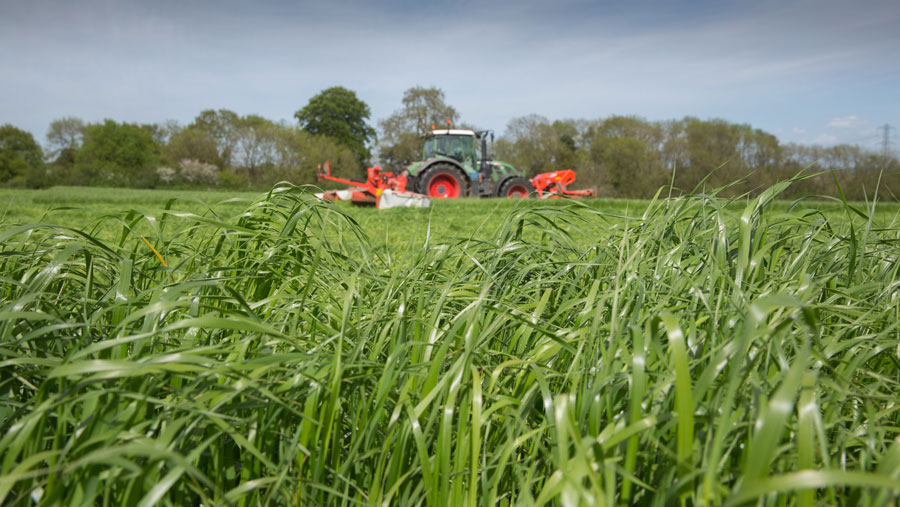New grass and clover varieties make recommended list
 © Tim Scrivener
© Tim Scrivener Nine new varieties have been selected for the 2021/22 recommended grass and clover lists (RGCL) for England and Wales.
One intermediate and three late-maturing varieties of perennial ryegrass (PRG), two hybrid ryegrasses (HRG), one Italian ryegrass (IRG), an intermediate festulolium and a white clover have been added to the lists, which are compiled each year to help grassland producers choose varieties that will perform well under their systems.
To be included in the lists, grasses and clovers must have undergone at least four years of independent testing for factors including total and seasonal yield, feed quality, disease and persistence. As few as one in 20 varieties of ryegrass tested make it to full recommendation on the list.
See also: Advice on establishing and growing clover in grass leys
“When thinking about reseeding, the RGCL should be used to check that the varieties being selected are on the list and are the best available, helping farmers make informed decisions alongside their seed merchants about the varieties that best meet their needs,” says AHDB’s grass and forage senior scientist, Siwan Howatson.
According to advice in the PGCL handbook – available to download from AHDB – tetraploid and diploid IRGs are best for two-year leys, HRG and early PRG for three-to-four-year leys and intermediate and late-maturing PRGs for long-term ones.
New on the list
PRG
- Intermediate PRG variety Ritchie has a heading date – when 50% of the ears in fertile tillers have emerged – during the second half of May. It is rated excellent for late-summer and autumn growth, winter hardiness, grazing yield and ground cover, and produces good yields under conservation management.
- The three late-maturing PRGs on the list, Wetherby, Zorgue and Delika, head in the first two weeks of June.
- Wetherby scores excellent for grazing yield, digestibility (D) value and metabolisable energy (ME) yield, as well as excellent yield when conserved, and winter hardiness. It has good resistance to crown rust, in common with Zorgue.
- When grazed, Zorgue has good D-value for a late diploid, and excellent early summer growth. First and second D-values are excellent under conservation management, with good first- and fourth-cut yields. Ground cover is rated excellent under both regimes.
- Delika has excellent early summer growth and yield when grazed, and resistance to crown rust. Like Zorgue, grazing D-value and ME yield are good for a late diploid.
IRG
- IRG yields more than PRGs, but is less persistent. Pinaco, the only new IRG on the lists, is rated good for yield and ground cover, with excellent second conservation cut yield in the first harvest year and good yields under a monthly cutting regime.
HRG
- HRG combines the sward density of PRG with the out-of-season growth of IRG. New tetraploid variety Abersheen is specifically recommended for conservation in areas with low risk of crown rust. It has excellent resistance to mildew and yield potential, with good ME yield in the first harvest.
- The second new HRG is another tetraploid variety and has good resistance to crown rust. Cordial produced excellent yields in first and second harvest years, and excellent ground cover in the second. First- and second-cut D-values and third harvest ground cover are rated good.
Festulolium
- AberRoot is a tetraploid intermediate festulolium (ryegrass-fescue hybrid). It is rated excellent for D-value when grazing, with high spring growth and good ME yield, and good yield under conservation management with high first- and second-cut D-values.
Clover
- The final variety to make the RGCL is white clover AberSirius. It has excellent autumn ground cover in the first harvest year under light defoliation and good yields in years two and three. Grass/clover yields are rated very good, with high early- and late-cut yields.
